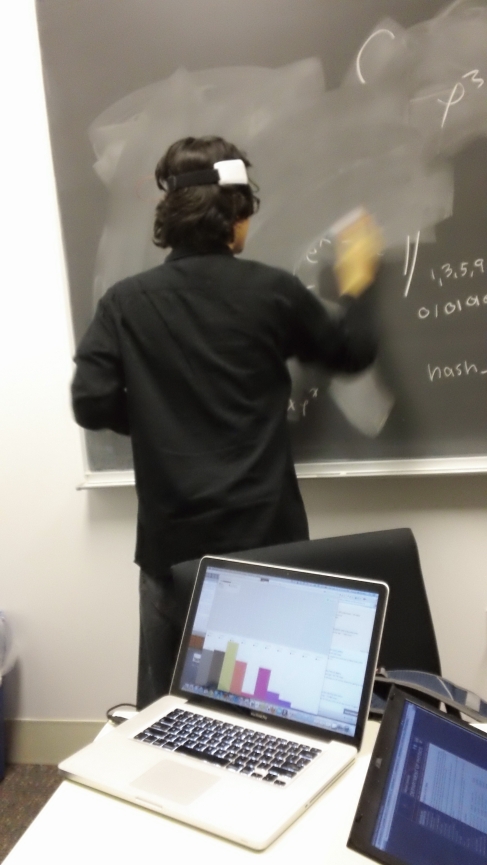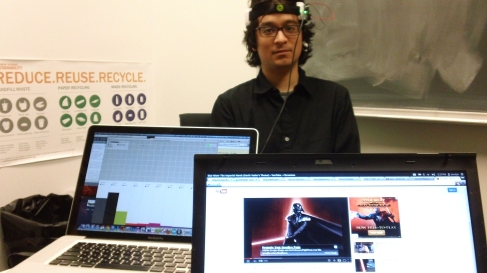After getting the necessary Arduino software installed, we opened up the MindFlex device and soldered the red to T and black to ground. After closing it all up and feeding the wires out a newly formed outlet, we twist-tied the Arduino to the headset and connected the red to RX (0) and black to ground.
Then, we downloaded the Arduino Brain Library from frontiernerds.com, and observed the input via the Serial Monitor. Once that seemed to be working we ran a few tests with the graph program, also from frontiernerds.com.
Here is George ready to check out his brain!
First we observed George’s read-out listening to electronic music, which George admittedly dislikes. his other brainwaves seemed to increase while attention, meditation, and delta waves diminished We observed the opposite effect in Jocelyn, who enjoys Avicii and other like him.
George seemed was stimulated by math and the Star Wars theme song.
After that and a break for pizza, we tried to implement some of our own graphical innovations in Processing. It took us a little while to figure out how to read the serial port values in a reliable way, but after that we played around with using scaled R (meditation), G (delta), and B (attention) values determined by the attention, meditation, and delta levels.
George typically displayed purple, but interestingly enough displayed pink when he kissed Jocelyn (not documented).
Ultimately, time and experience constraints prevented us from going any further. Our ultimate goal was to develop a simple program, which housed two libraries of music, one upbeat and when more downbeat. Based on an interpretation of the user’s brain activity, the program would the next song based on what seemed to please the user in the past. Perhaps this would include an interesting graphical output as well!
Team:
-George Wong
-Jocelyn Schulz
-Casey McGinley




